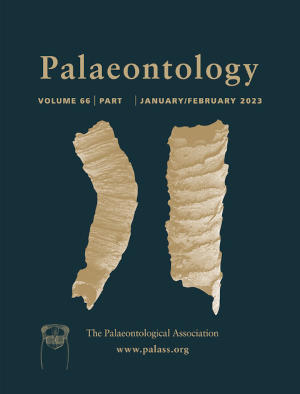Article: Germ-soma differentiation and reproduction in a new species of early Cambrian acritarch
Publication: Palaeontology
Volume:
66
Part:
6
Publication Date:
2023
Article number:
e12687
Author(s):
Wei Liu, Zongjun Yin, Bing Pan, Bing Shen, Lin Dong, and Guoxiang Li
Abstract
Abstract As a significant evolutionary innovation, multicellularity has independently evolved multiple times throughout the evolutionary history of eukaryotes, making a substantial contribution to their diversity. In retracing the multicellularity of eukaryotes, deep-time fossil records play an irreplaceable role. In this paper, we report a new acritarch Concavaesphaera ornata gen. et sp. nov. from the early Cambrian Kuanchuanpu biota (535 Ma). These fossils are generally spherical, with diameters ranging from 450 to 950 μm, and feature an envelope with complex ornament. Inside, there are two groups of cells varying in size. Larger cells are relatively fewer in number and each resides within a sac-like cavity distributed along the inner wall of the envelope. Statistical data show a positive correlation between the diameter and cavity volume during the development of large cells. Small cells are numerous, have a diameter of about 15 μm, and fill the entire interior of the specimens. We interpret the large cells as reproductive cells and the small cells as somatic cells. These observations show that Concavaesphaera evolved multicellular complexity equivalent to that of modern Volvox, with germ-soma differentiation and separation. Available evidence suggests that the similarities between Concavaesphaera and Volvox are more likely to be the result of convergent evolution. Therefore, Concavaesphaera may represent an extinct multicellular eukaryote which evolved during the Cambrian explosion and probably documented an independent innovation of multicellularity in eukaryotic evolutionary history. This implies that multicellularity evolved many more times in eukaryotes than previously estimated.
